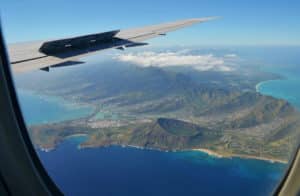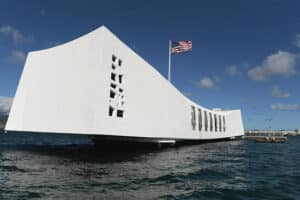 Photo provided by @hb_spotter
Photo provided by @hb_spotter
It’s been nearly a year since Alaska Airlines and Hawaiian Airlines officially merged, closing one of the biggest airline deals in two decades. If you’re like me and loved the little perks of Hawaiian airlines, including free Starlink, POG, and a cookie at landing, you likely wondered if things were about to change. With integration well underway and the dust beginning to settle, we wanted to provide an update and share our thoughts on who benefits most from the merger—and who may see some drawbacks. Let’s dive in.
Expanded Route Network and More Destinations
The combined airline now serves 141 nonstop destinations, including 29 international routes. Honolulu has emerged as a major hub, making it easier to connect to Asia, the South Pacific and the U.S. mainland.
For Oʻahu visitors, this means more nonstop flight options, better scheduling and smoother connections. Whether you’re flying in from Los Angeles, Seattle or Tokyo, expect more convenience getting into Honolulu International Airport.
Loyalty Programs and Atmos Rewards
As of August 20, HawaiianMiles and Alaska’s Mileage Plan have officially merged into Atmos Rewards. Travelers can now choose how they earn points—by miles flown, ticket spend, or even number of segments.
For frequent visitors to Oʻahu, this means you can build points on short interisland hops, long-haul flights to the continental U.S., or premium routes like Honolulu to Tokyo. Perks include:
- 1:1 point transfer between legacy accounts
- Elite status matches
- A new premium credit card with lounge access and companion benefits
- Free Starlink Wi-Fi for Atmos members starting in 2026
JetBlue Partnership Ending Soon
If you’ve been booking Oʻahu trips using JetBlue TrueBlue points, take note: the Hawaiian–JetBlue partnership is ending. You must book flights by September 30, 2025, and travel by March 31, 2026, to use points. After that, Atmos Rewards is your only loyalty option.
Seasonal Boost in Honolulu Flights
Good news for peak-season travelers: Hawaiian Airlines is adding extra flights to and from Honolulu this winter.
- Honolulu – Sydney: daily service Dec 18, 2025 – Jan 31, 2026
- Honolulu – Los Angeles: five daily flights during Thanksgiving and Christmas holiday periods
- Honolulu – Seattle: four daily flights, including new Boeing 787 service to Tokyo with upgraded suites
This expanded schedule makes it easier to snag a flight to Oahu even during high-demand holidays.
Key Policy Changes Travelers Should Know
Alongside the perks, there are some changes to watch:
- New No-Show Policy: Miss your flight without canceling? You’ll forfeit the value of your ticket.
- Seat Together Protections: Families are guaranteed seating together without paying extra.
- Job Cuts Behind the Scenes: A handful of Hawaii-based jobs have been eliminated, but interisland service remains protected by regulators.
- Leadership Shifts in Honolulu: Alaska has installed new management to oversee Hawaiian operations, so expect more streamlined check-in and customer service improvements.
Winners and Losers of the Hawaiian-Alaska Merger
So who comes out ahead—and who may feel the squeeze?
Winners
- Oʻahu travelers benefit from more flight options, especially during holidays.
- Frequent flyers enjoy flexible loyalty perks under Atmos Rewards.
- Families have better seating protections and expanded interisland reliability.
Potential Losers
- Travelers loyal to JetBlue must adjust quickly before the partnership ends.
- Price-sensitive travelers could see higher fares on busy Oʻahu routes as competition narrows.
Final Take: A Net Positive for Travelers
Overall, the Alaska–Hawaiian Airlines merger has been a net win for travelers. Expanded route access, a stronger loyalty ecosystem, and new consumer protections create more opportunities for both residents and visitors to Hawaiʻi. Still, with some job cuts, stricter fare rules, and fewer competitors, not every outcome is rosy.
For now, though, the combined carrier looks well-positioned to serve Hawaiʻi and beyond— making it easier than ever to connect the Hawaiian Islands with the rest of the world.







